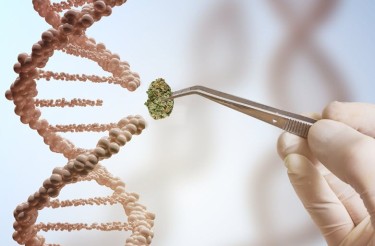
Grafting Cannabis – Multiple Strains in a single plant!
https://www.samvanaken.com/tree-of-40-fruit-1/
Reddit link https://bit.ly/3MLcact
Grafting is an ancient technique that has been practiced by horticulturists for thousands of years. Nobody really knows the true origins of the practice, yet it is mentioned in virtually every culture and even holy texts like the Bible.
Experts speculate that the first grafting practices probably was inspired by natural grafting – when a parasitic plant attaches itself to another. For example, the Mistletoe is both a symbol of Christmas and a parasitic shrub that feeds off other plants.
“Parasitic plants, such as mistletoe, that grow and feed on often unrelated species may have also contributed to the development of grafting as a technique, as people would have observed mistletoe growing on trees such as apples or poplars.” – Science Direct, Plant Grafting
Irrespective of the origins of grafting, it’s a technique that is regularly practiced in orchards or to manipulate certain plant species to grow in areas that are foreign to their natural environment. Some of the more famous examples is Sam Van Aken’s “Tree of 40 Fruit”
The Tree of 40 Fruit is a single tree that grows forty different types of stone fruit including peaches, plums, apricots, nectarines, cherries, and almonds. Created through the process of grafting, the Tree of 40 Fruit blossom in variegated tones of pink, crimson and white in spring, and in summer bear a multitude of fruit. Primarily composed of heirloom and antique varieties, the Tree of 40 Fruit are a form of conservsation, preserving stone fruit varieties that are not commercially produced or available. – Sam Van Aken
Interesting right?
Of course it is! But how does this relate to weed Reginald? How?
I’m so glad the little voice in my head that pretends to be you asked!
Because I stumbled on a Redditor that is currently attempting to graft three different strains together into one plant.
It was exactly the kind of madness this world needed right now!
TheInvestmentGod and his Three-Headed Monster!
While the post has surprisingly little engagement, I thought it to be a novel idea which is why I’m giving “TheInvestmentGod” a shout-out and wishing him all the best on his venture. You can see the Reddit Post Here.
Quickly, people began showing their support for the effort and started pitching ideas for what to call it. “You should call this plant jekel and hyde or me, myself and irene lmao” one Redditor commented, while another said, “Your scientists were so preoccupied with whether or not they could, they didn't stop to think if they should!”
As TheInvestmentGod responded to this, “Yes we should!”
A bit down I saw this comment;
I kinda think I know but would love to see this done from the start.. in real time..
I'm totally assuming, without googling, that a branch is cut from the mother base plant to expose an available shoot and then a plant trimming is cut from another plant and taped together like you would if you broke a stem. I find it fascinating. I'm sure Reddit with correct me if I'm wrong but curious if I'm right. – Bagonia77
Well, Reddit probably did correct her, but her question inspired me to write this article and lay out the basics of grafting hopefully to inspire other mad scientists to Frankenstein the hell out of some cannabis!
So…
HTF do you Graft?
In a way, Bagonia wasn’t off, she simply missed a critical step. In essence, it’s exactly what grafting is. You simply cut a piece of the stem, exposing it, and then using a binding medium you place them together and secure the two pieces.
As the plant heals, it will begin to regrow the stems into a singular plant and then the base plant will also feed the new foreign graft.
Science Direct Explains;
In the 1960s and 1970s, work by several groups using succulent and tomato grafting defined a time course for graft formation by observing cell division and anatomical changes at the graft junction. Initially after grafting, ruptured cells collapse and the intact cells close to the graft junction adhere to the opposing tissue. This contact strengthens with time as the cells interdigitate (Figure 2). Polysaccharides, including pectins, are deposited at the graft junction and are thought to provide strength. At the same time, cell division produces a mass of pluripotent cells termed a callus. This stem cell-like tissue is thought to differentiate, analogous to the process of wound healing in animals that requires stem cell division and differentiation. – Science Direct, Grafting Plants
Typically, you need some sort of binding agent that facilitates the healing process. Something like Aloe Vera works perfectly because it encapsulates the open wound and contains proteins to help promote growth.
However, it’s also important to understand that not all plants are capable of grafting with other plants.
The majority of plants will graft to themselves, fewer will graft to very closely related species, and only rarely will plants successfully graft to more distant relatives. Some exceptional plants include certain pear varieties that can be grafted to apples, and grafting among the nightshade family (Solanaceae). Potatoes, tomatoes, eggplant, and tobacco can be grafted to each other with a high degree of success. For instance, the commercial grower Thomson & Morgan has introduced a tomato scion grafted to a potato rootstock for home growers called the Tomtato® that produces both tomatoes and potatoes. This exception among the Solanaceae suggests that these plants have overcome an inter-species barrier that most plants possess. – Science Direct, Grafting Plants
Fortunately, different cannabis strains are still part of the cannabis family, which means that they should have a relatively high success rate for grafting. Which is why TheInvestmentGod’s experiment will probably work. What’s going to be interesting is how the three different strains will behave when they come to the flowering stage.
It’s important to understand that certain strains will require more flowering time than others, meaning that if you graft, you need to consider compatible flowering times. You don’t want a quick flowering indica and a slow flowering sativa grafted into a single plant. It’s best to graft strains that have generally the same length in flowering to ensure a top yield.
So How do you Graft a Cannabis Plant?
The information I’m providing here comes from RoyalQueenSeeds. While I personally have not grafted cannabis, I believe that this method seems the most straightforward of the methods I’ve seen online.
Step 1: Select the scion and the graft area
First you want to select a scion (cutting) and use a razor or scalpel to cut similar shapes and sizes at an angle. You want to ensure that the grafting area and the cutting have similar dimensions to facilitate the graft.
Next, you’ll want to remove the foliage around the area and prepare the graft.
In the next step, you’ll trim the branch you want to graft, and quickly cut a larger surface area on the stem. Once this is done, place the cutting in some distilled water. You want to act quickly in order to minimize exposure to the air.
Afterwards, you’ll prepare the grafting area where you’ll take the razor blade or scalpel and cut at an angle a space where you’ll be sticking the new cutting to. Try to match the shape and surface area of both incisions.
Once you are ready, quickly take the scion and douse it with root hormone or dip it in some aloe Vera, and coat the graft area with the same, and stick it together. Take some grafting tape and starting from the bottom, wrap the two branches until they are tightly bound.
Make sure to not allow any air or light to penetrate the “wound”. You’ll only keep this on for a few days until the healing starts.
You’ll also be taking some wire and wrapping it around the area in a criss-cross pattern. This is meant to strengthen the graft even more.
Once everything is bound together, you can take some nutrient spray, spray the inside of a plastic bag and cover the plant. This will create an environment to stimulate growth and keep everything moist and ready for healing.
If all goes well, the plant should bind together and you can officially call our graft a success!
Why you should totally try this at home!
If you’re growing weed, then why not graft some Frankenstein plant for your own amusement? The InvestmentGod certainly inspired me to take a whack at grafting. If you’re thinking about doing it too, why not let us know in the comment section.
What do you think, will the experiment work or will it fail?
ADVANCED CANNABIS PLANT TIPS, READ MORE...
SUPER STRAIN CANNABIS PLANTS THAT ARE PEST RESISTANT? DNA IN WEED!






